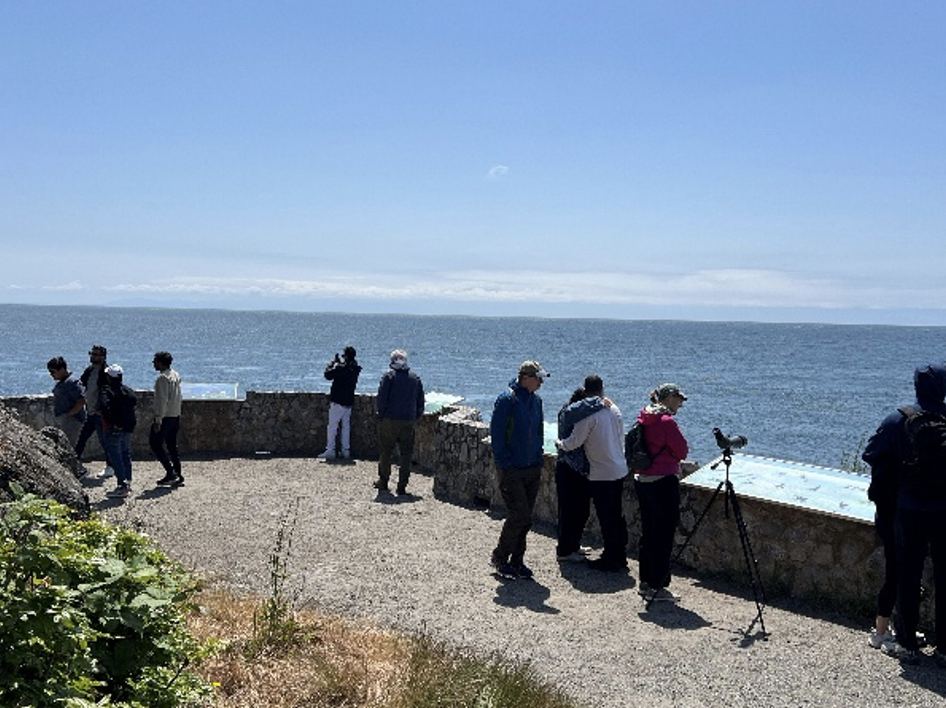“What time do the whales show up?”…..
Written by Jeremy Lucas, Vice President Eastside Audubon
…is the most common question that I was asked during my Oceana Naturalist event at Lime Kiln Point State Park for the weekend of June 14 – 15, 2025. Though the question does tend to get a smile from me in response like I have control over when they swim by, it also reminds me of how beloved orcas are in Washington State and beyond.
Every June, Washington State, Oregon, and British Columbia celebrate Orca Action Month (www.orcamonth.org). There are two distinct populations of orcas that can be found in the Salish Sea and off the coast of the Pacific Northwest, the mammal-eating Biggs (or Transient) population and the fish-eating Southern Resident population. Though the Biggs population is doing well and is growing, Orca Action Month focuses on the endangered Southern Resident population, which the current census puts the population at 73 individuals (Center for Whale Research, July 2024).
My event was held at the Whale Wall at Lime Kiln Point State Park on the west coast of San Juan Island. Though all wild animals can be unpredictable, if you were looking for a location that is most likely to see orcas, this spot is it. I couldn’t have asked for a better day, weather-wise. It was sunny and warm, with a little breeze coming off the Salish Sea, with calm water for visibility.
The wildlife was amazing, and I was able to perform Naturalist duties explaining our Salish Sea ecosystem and answer questions about orcas and other animals. We were treated to sightings of a pod of harbor porpoises, a river otter, a hefty-looking Steller sea lion, and a variety of birds including pigeon guillemots and a rhinoceros auklet (birds in the alcid family are a particular favorite of mine). When we felt all hope was lost, finally, at the end of the day on Sunday, a blow in the distance. A dorsal fin. Five dorsal fins? Orcas! We were treated to five orcas! Though these were Biggs and not the Southern Residents, it was still an amazing experience to see them from the shore. All told, I had great conversations with 117 people.
As a graduate student who had the amazing opportunity to research Southern Residents for my thesis, I can’t explain the excitement and awe I felt every time I had the opportunity to experience being around the intelligent apex predators of the sea. At the time my thesis was published, in 2009, there were 87 individuals across the three pods (J, K, L). Today, with only 73 remaining, it breaks my heart that we still haven’t been able to crack the code to recover these animals. However, when I look at the growing Biggs populations, who share the same geographic area, I find hope that we can do the right things and recover this population.
I am asking every one of you reading this to sign my petition to tell Congress to protect the Endangered Species Act, the federal law that will be instrumental in recovering Southern Resident orcas. Please consider signing on at: Save the Endangered Species Act | Take Action with Oceana | OCEANA - Protecting the World's Oceans
Thank you my colleagues and partners for helping to make this happen:
Oceana
Orca Salmon Alliance
Washington State Parks
Friends of Lime Kiln Society (F.O.L.K.S.)




